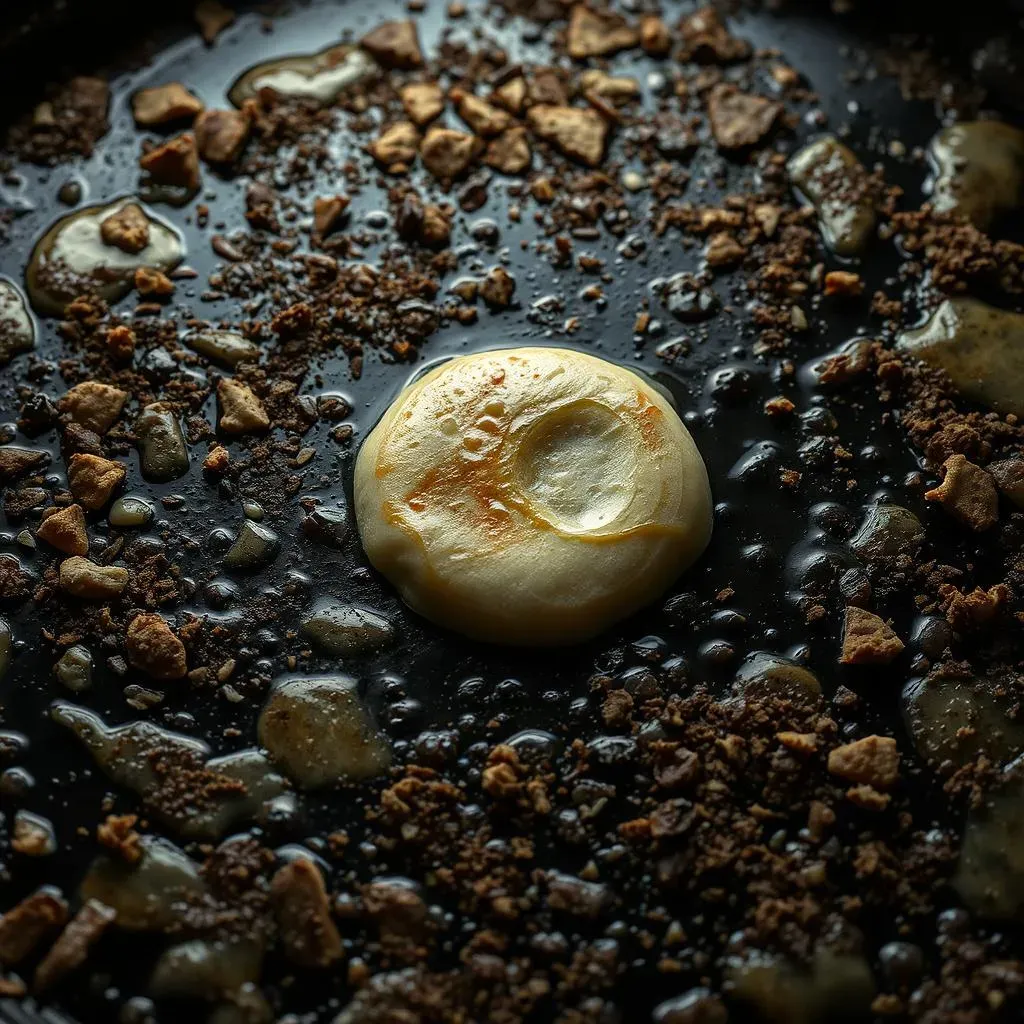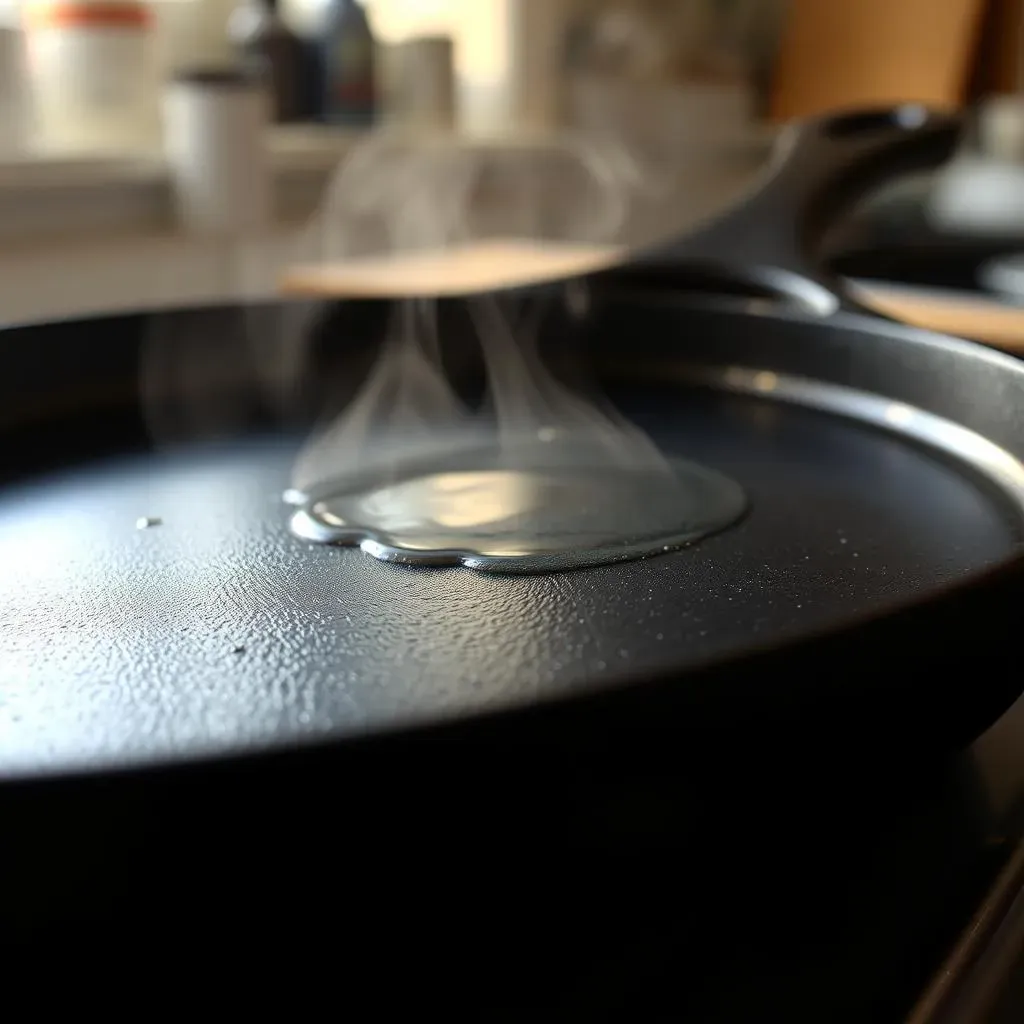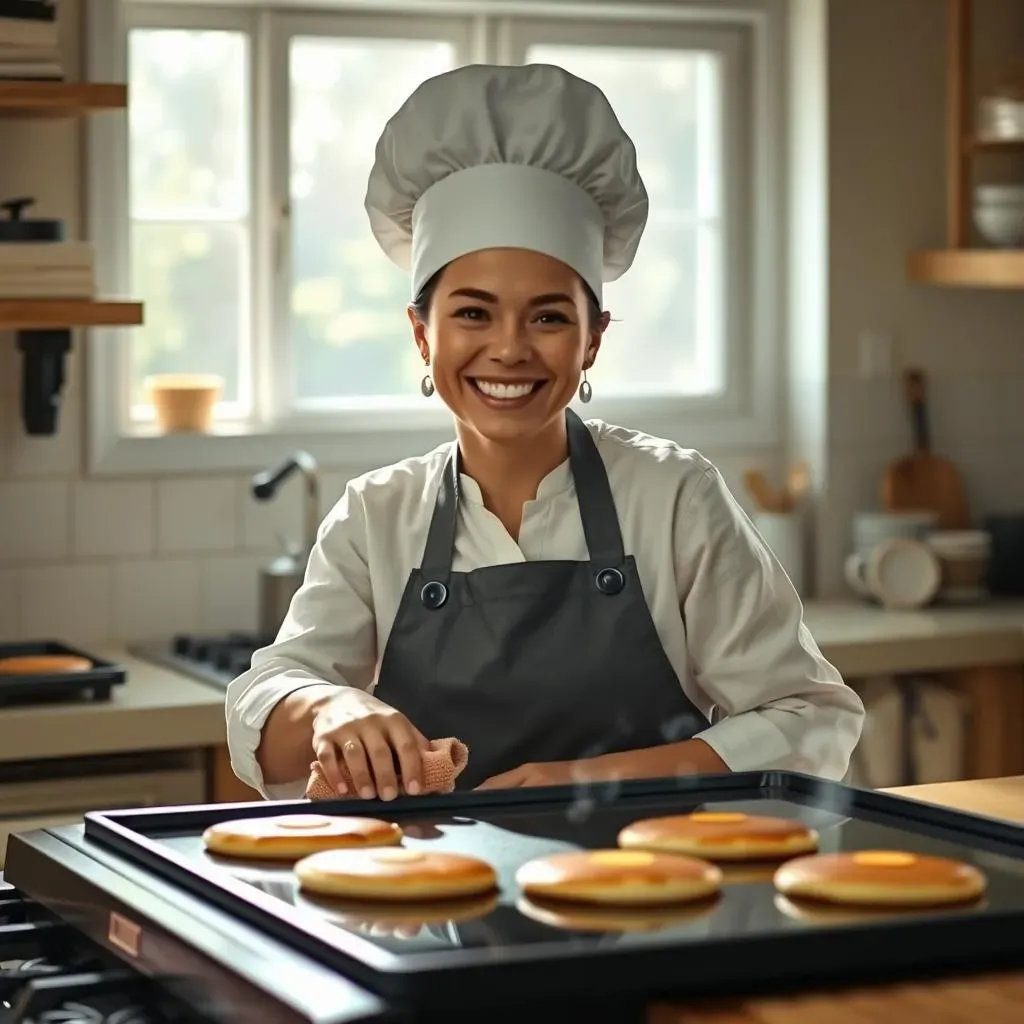Table of Contents
Pancakes are awesome, right? But the sticky, greasy aftermath on your griddle? Not so much. We all love a good stack of fluffy pancakes, but the thought of cleaning that griddle can make anyone groan. It's like a delicious battle was fought, and the griddle is the casualty. But don't worry, I've been there, staring at a grimy surface, wondering how to tackle it. This article isn't about some magical cleaning potion; instead, we will look at a straightforward way to get your griddle back to its former glory. I'm going to walk you through the real deal on how to clean a pancake griddle, from understanding the mess to using simple methods that actually work. We'll cover why your griddle gets so gross, what you need to do to make it shine again, and how to keep it clean moving forward. So, grab your apron, and let's get started. By the end, you'll be a pancake-flipping, griddle-cleaning master, and that's a promise!
The Messy Truth About Pancake Griddles

The Messy Truth About Pancake Griddles
Why Your Griddle Gets So Grimy
Okay, let's face it, pancake griddles aren't exactly the cleanest things in our kitchens. They're like magnets for grease, burnt batter, and all sorts of sticky residues. It's not just pancakes, either. Think about all those grilled cheese sandwiches, bacon strips, and even the occasional burger that's sizzled on there. The heat cooks the food, but it also bakes the mess right onto the surface. It’s like a tiny food crime scene happening on your countertop every time you cook. This build-up isn’t just unsightly; it can actually mess with how your food cooks. The uneven surface can lead to hot spots, and nobody wants a pancake that’s half-burnt and half-raw.
And what about those sneaky splatters? The ones that manage to find their way into every nook and cranny of the griddle? They harden over time, turning into tough, crusty layers that laugh in the face of a regular sponge. It's a battle, I tell you, a constant war between you and the remnants of your delicious meals. You might think, "Oh, I'll just wipe it down later," but those little bits of food are plotting their takeover. They’re patiently waiting to become a crusty, greasy fortress on your griddle. It's not just about aesthetics; it's about having a clean surface to cook on, and that's where the real challenge begins.
Messy Culprit | Why it Sticks | The Result |
|---|---|---|
Burnt Batter | Sugars caramelize and harden | Tough, sticky residue |
Grease Splatter | Fats solidify when cooled | Hard, greasy layers |
Food Particles | Dry and adhere to the surface | Crusty, stuck-on bits |
The Impact of a Dirty Griddle
Beyond the yuck factor, a dirty griddle actually affects your cooking. Think about those times you’ve tried to flip a pancake, and it just sticks stubbornly to the surface. That's not just bad luck; it's often because of the build-up of old grease and burnt food. These residues create an uneven cooking surface, which means some parts of your food will cook faster than others. You end up with a sad, unevenly cooked meal, and nobody wants that. Plus, all that old, burnt stuff can start to impart a weird, funky flavor to your food. It's like your griddle is holding onto the ghost of breakfasts past, and it's not a pleasant experience.
A neglected griddle can also be a breeding ground for bacteria. All those food particles, combined with heat and moisture, create the perfect environment for nasty stuff to grow. It's not just about the taste of your food anymore; it's about hygiene and keeping your cooking area safe. Ignoring the mess isn't just lazy; it's also a little risky. So, it's more than just wanting a clean griddle for the sake of it. It's about ensuring that your food cooks properly, tastes delicious, and doesn't come with any unwanted guests. Let's be honest, nobody wants bacteria with their pancakes.
- Uneven Cooking: Hot spots cause inconsistent results.
- Off Flavors: Old residue taints the taste of new food.
- Hygiene Issues: Bacteria can thrive on dirty surfaces.
- Sticking Food: Old buildup makes cooking difficult.
How to Clean Your Pancake Griddle Like a Pro

How to Clean Your Pancake Griddle Like a Pro
The Warm-Up: Getting Ready to Clean
Alright, so you're staring at your grimy griddle, ready to tackle the mess. First things first: don't go in guns blazing with a steel wool pad. That's a one-way ticket to a scratched-up surface, and nobody wants that. The secret weapon here is heat. Yes, you heard me right. A warm griddle is way easier to clean than a cold one. It's like the grease and grime are a bit more willing to let go when they're not all hardened and stubborn. So, if you've just finished cooking, don't let the griddle cool completely. Keep it warm, not scorching hot, and let's get to work. It's like giving the mess a little head start on its way out. Think of it as a gentle persuasion, not a forceful eviction.
Now, before you even think about soap, grab a flat spatula or scraper. You know, the one you use for flipping those perfect pancakes. That's your first line of defense. Gently scrape off any loose bits of food and grease. Be careful not to dig too hard or you might scratch the surface. It’s like giving the griddle a pre-wash, getting rid of the big chunks before we get into the finer details. This step alone makes a huge difference. It gets rid of the easy stuff, leaving less work for the next steps. This is not the time for brute force, think gentle but firm.
Step | Action | Why It Matters |
|---|---|---|
1 | Keep the griddle warm | Softens grease and grime |
2 | Scrape off loose debris | Removes large food particles |
Soapy Solution: The Gentle Clean
Okay, now that we've got the big stuff out of the way, it's time to bring out the soap. But not just any soap, you want a mild dish soap. Harsh chemicals can damage your griddle, especially if it has a non-stick surface. Mix some warm water with a bit of soap, and grab a sponge or a soft cloth. Don't use steel wool or anything too abrasive. Remember, we’re aiming for gentle but effective. It's like giving the griddle a spa day, a nice, soothing wash to get rid of all the gunk. Now, wipe down the surface, making sure to get into all those nooks and crannies where grease likes to hide.
If you're dealing with some stubborn spots, don't panic. Let the soapy water sit for a few minutes. This gives the soap a chance to break down the grease, making it easier to wipe away. It’s like giving the soap time to work its magic, loosening up all that stuck-on food and grime. You can also try using a bit of baking soda for those really tough spots. Just sprinkle some on, add a little water, and let it sit for a bit before scrubbing gently. Rinse the griddle with clean water and make sure all the soap is gone. You don’t want soapy pancakes next time. It’s all about teamwork, the soap, water, and a bit of elbow grease.
The Final Touch: Drying and Seasoning
Alright, the griddle is clean, and it's looking pretty good. But we're not done yet. Just like a good athlete needs to cool down after a workout, your griddle needs to be dried properly. Grab a clean towel and wipe it down thoroughly. Make sure there are no water spots left. You don't want to invite rust to the party. It's like giving the griddle a final polish, making sure it's ready for its next cooking adventure. And if you have a cast iron griddle, you might want to give it a light coat of oil after drying. This helps to keep it seasoned and ready for the next time you want to make pancakes. It's like giving your griddle a little protective shield, ensuring it stays in top shape.
And there you have it, a squeaky-clean griddle, ready for action. It wasn’t so bad, right? It’s all about using the right methods and a little bit of patience. Remember, a clean griddle is a happy griddle, and a happy griddle means delicious food. Now go, make some pancakes, and enjoy the fruits of your labor. And when you're done, you know exactly what to do. Cleaning your griddle doesn't have to be a chore; it can be a simple routine that keeps your kitchen in tip-top shape. It’s like a well-oiled machine, the cleaner it is, the better it performs.
Keeping Your Pancake Griddle Clean

Keeping Your Pancake Griddle Clean
Daily Habits for a Happy Griddle
Alright, now that you know how to get your griddle sparkling clean, let’s talk about keeping it that way. It’s like brushing your teeth; you don’t just do it once and call it good. Regular maintenance is key. So, after each cooking session, don't just leave that griddle to sit with all the leftover grease and crumbs. While it's still warm, take a few minutes to scrape off any food bits. A quick wipe-down with a damp cloth or paper towel can make a huge difference. It’s like giving your griddle a little refresh after each meal, preventing the build-up of tough, stuck-on messes. Think of it as a mini-clean, a little effort that saves you a lot of work later. This simple step can prevent a small mess from turning into a major headache.
And here's a pro tip: don't let the grease cool and harden. That's when it becomes a real pain to remove. It’s much easier to wipe off while it's still warm and soft. It's like catching the mess before it has a chance to settle in and make itself at home. Plus, a quick clean after every use means you won’t have to spend hours scrubbing later. It's all about making cleaning a part of your cooking routine, not a separate, dreaded chore. This way, you'll always have a clean griddle, ready for your next pancake adventure.
Habit | Why It Helps |
|---|---|
Scrape after use | Removes loose food bits |
Wipe while warm | Prevents grease from hardening |
Quick clean | Reduces the need for deep cleaning |
The Deep Clean: When It’s Time to Go All In
Okay, even with the best daily habits, sometimes your griddle needs a bit more love. Think of it as a spa day for your cooking surface, a chance to really get down and dirty. If you notice that the simple wipe-downs aren't cutting it anymore, it's time for a deep clean. This doesn’t mean you need to call in a professional; it just means taking a few extra steps. Don’t be afraid to use a bit of soap and warm water, and maybe even some baking soda for those stubborn spots. It’s like giving your griddle a thorough refresh, removing all the built-up gunk and grime. Remember, gentle scrubbing is key, you don't want to scratch the surface.
And hey, if you’re using a cast iron griddle, a little seasoning after a deep clean is a great idea. It helps to keep it in tip-top shape. It's like giving your griddle a protective layer, preventing rust and ensuring that it’s ready to cook your next meal. And don't forget to always dry your griddle completely after cleaning. Water left behind can cause rust, and nobody wants that. It’s about being proactive, ensuring that your griddle stays in great condition, and is always ready to cook up a storm. Think of it as a little bit of extra care that goes a long way.
- Use mild soap for deep cleans
- Season cast iron after cleaning
- Always dry thoroughly to prevent rust
- Don't be afraid to use baking soda for stubborn spots